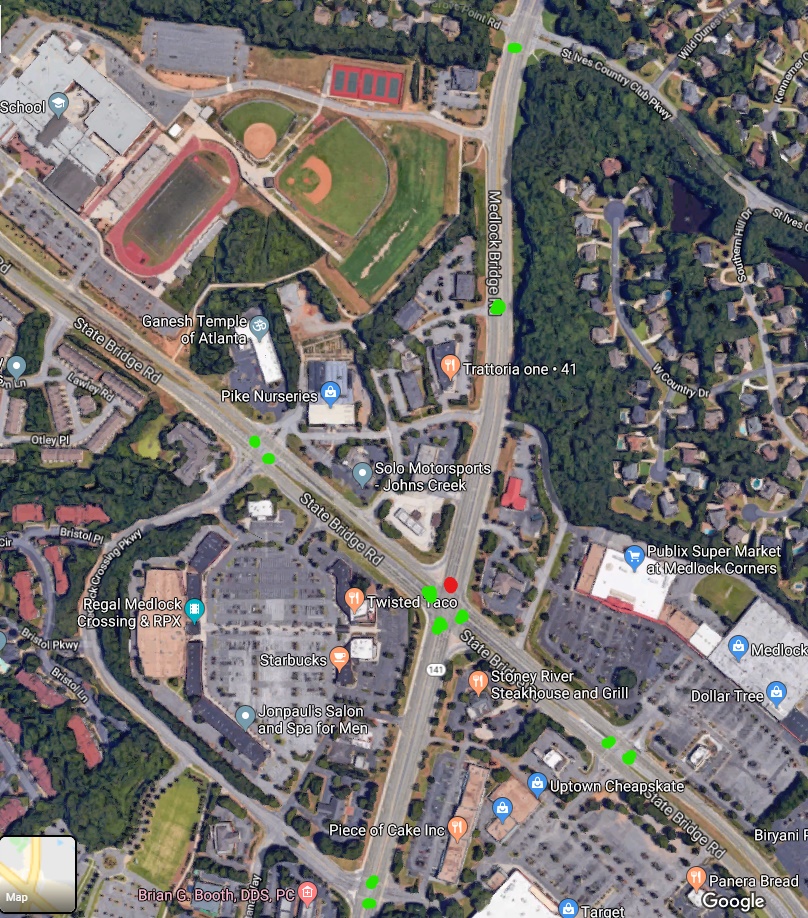Safety Used To Justify Solutions
Johns Creek has used the “safety” for the pursuit of many solutions in Johns Creek in search of justifications. But should there be a litmus test when using these claims as justification in the implementation of policy changes, decisions and home inspections.
Residents have seen expensive traffic circles implemented at intersections that have functioned for decades as two or four way stops. The reason cited? Safety.
Residents replacing a hot water heater in their homes now need an inspection. Safety again.
The fourth fire station was justified as a safety issue, despite questions and observations that a Fast Response Unit might actually provide better outcomes for residents of Johns Creek.
Traffic intersections where you used to be able to turn left when there was a safe opportunity to do so now prohibit you from making a left turn unless you have a flashing yellow or green arrow. The reason cited? Safety.

We have U-Turns being eliminated at 141 and State Bridge southbound citing safety, while the other three legs of the intersection all still allow U-Turns. And a crossover just north of that intersection? U-Turns are allowed and despite the safety issue, will continue to be allowed for the benefit of the businesses.
The U-Turn crossover as you head south on 141 to make the U-Turn to head north is clearly more dangerous for drivers, especially young drivers as they leave the school in the afternoons. However, for the benefit of the businesses this is apparently a risk we can tolerate.
Somehow, at 141 and State Bridge, with a traffic light giving the drivers the right of way, the failure to yield the right of way by State Bridge Westbound drivers taking a right, is enough to get that U-Turn eliminated. Does that make sense?
I Can’t Drive 55
Now we have the lanes on 141 being narrowed from 12 feet to 11 feet AND the speed limit being lowered from 55 to 45 all in the name of safety.
This leads me to the following question:
What Can’t The City Of Johns Creek Do For Safety?
That’s not really the question to be honest. We would ask that if our duly elected officials were action the ones with oversight in making these decisions. But they are not. So here is the question we need to ask:
Are There Limits to What A Staff Member Can Do Using Safety As A Justification?
What’s process anyway? The residents here have elected a City Council to represent them. Can the City Council change this decision? If so how?
For starters, I’d demand actual data on 141 with traffic accidents to determine if we are actually implementing a solution solving a problem.
- How many rear end collisions on 141 were reported for the last 36 months?
- How many annual miles were driven on 141 for the last 36 months?
- What is the ratio of rear end collisions to miles driven?
- Is this higher or lower than the national average?
- Is this higher or lower than the average for surrounding areas?
- How many of the rear end collisions on 141 were in areas where the posted speed limit was 55 and how many were in areas where the posted speed limit was 45?
- How many additional minutes of travel will be added daily to commuters traveling the 141 corridor in Johns Creek by lowering the speed limit? (if just 4 miles of 55 MPH road is reduced to 45 MPH, each vehicle will have one extra minute of travel or 24% longer)
During non-rush hours, adding 1 minute of travel to 15,000 vehicles daily equals 15,000 minutes of time. That is 250 hours per day lost. That is 1250 hours per week lost. Or 65,000 hours per year.
You can read about the high cost of traffic here: https://ejmoosa.com/the-high-cost-of-traffic-dollar-and-sense/
This decision could cost more than $650,000 per year of lost time for drivers in Johns Creek if your time is worth $10 per hour. I bet your time is worth more.
If this is a $650,000 per year decision, don’t you think your City Council should have had the opportunity to weigh in knowing the actual facts and costs of the decision?
I certainly do.



